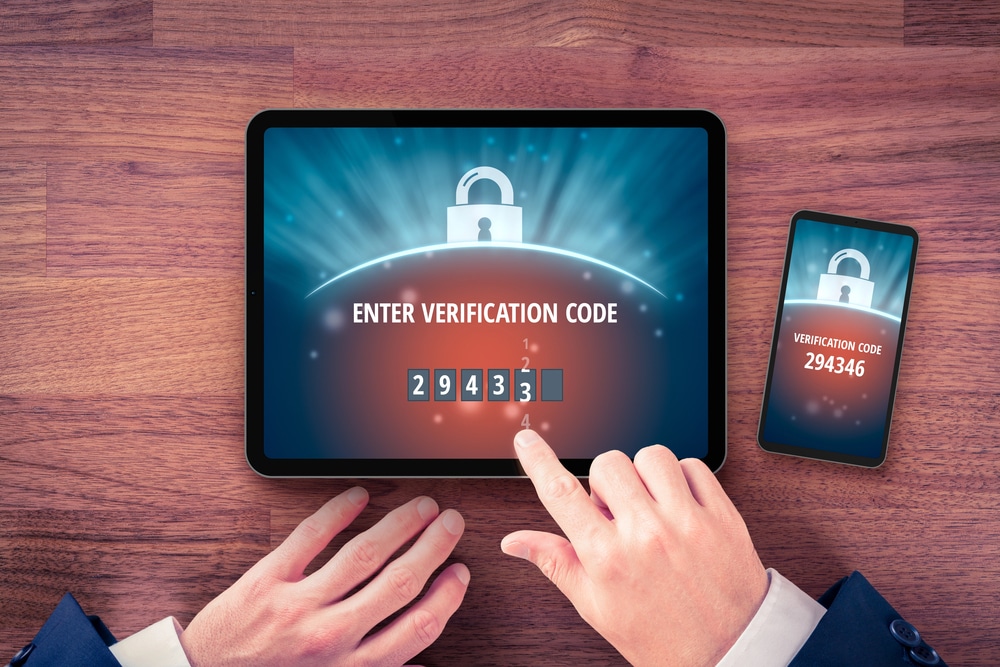Google Authenticator and Microsoft Authenticator are both authentication apps that provide an extra layer of security for businesses. In this article, we explore which app is best for different businesses.
What Are Authentication Apps And Why Do They Matter For Your Business?
Authenticator apps are tools that businesses use to make their networks and data more secure. To understand how authenticator apps work - and why they’re worth adopting - you first have to understand two-factor authentication (2FA).
Authentication systems are trying to do one simple thing: Prove that a user should be granted access. In their simplest form, these systems rely on a user providing something they know: A username and a password.
Unfortunately, usernames and passwords get hacked, and then people who should not be granted access can gain access anyway. This is where 2FA comes in; it requires users to provide two forms of authentication: What they know and what they have.
In the most commonly used 2FA systems, what a user has is access to their phone or inbox; one-time codes are sent through SMS or email and inputted by the user as the second factor. Once again, we run into a problem: Malicious actors can redirect messages to their phone or hack into your inbox.
Authenticator apps solve this problem by allowing you to authenticate using only your phone - even if your phone is offline. The system used to make this happen is fascinating (and if you’re interested, we can write an article about it), but the salient point is that without physical access to a user’s phone, authenticator apps are nearly impossible to hack.
That can be a tremendous boost to the security of your business. Best of all, once the authenticator app is downloaded and set up, using it takes virtually no effort; these apps are incredibly efficient. In cybersecurity, a very secure solution that’s easy to use is a dream; that’s why we think authenticator apps are worth your time.
Let’s compare two: Google Authenticator and Microsoft Authenticator. Both are free and easy to use:
Google Authenticator: Features And Capabilities
Key Features & Authentication Methods
The key feature of Google Authenticator is that it’s incredibly simple to use. There are very few features: A QR code scanner to sync the app up with the account requiring 2FA, and an export tool
The Google Authenticator app supports time-based one-time passwords (TOTP) and HMAC-based one-time passwords (HOTP).
Pros & Cons For Business Use
The Google Authenticator app is free to use, and it’s easy to set up for anyone with a Google account. The app is also incredibly simple, and it makes it easy to port keys from one phone to another.
The biggest downsides? Google Authenticator is limited; it has virtually no features outside of basic authentication. It is also difficult to port keys from Google Authenticator onto non-Google authentication apps, and equally challenging to import keys from other authentication apps onto Google Authenticator.
Microsoft Authenticator: Features And Capabilities
Key Features & Authentication Methods
Microsoft Authenticator is feature-rich compared to Google Authenticator. The features it offers include:
- Passwordless sign-in for Microsoft accounts
- Support for Verified IDs
- Support for work, school, and personal accounts
- Simple backup for keys
- Biometric/PIN passkey support
- Location-based permissions
- Push notifications to alert users of login attempts.
The Microsoft Authenticator app supports time-based one-time passwords (TOTP); it also supports FIDO2 authentication using biometrics or PINs.
Pros & Cons For Business Use
Using the Microsoft Authenticator app makes a lot of sense for businesses that are already using the Microsoft 365 platform; passwordless sign-in provides an extremely convenient way to make sign-in more secure, and through Microsoft Authenticator, it can be done with relatively little security risk. Best of all, the app is completely free.
The biggest downside to Microsoft Authenticator is actually how feature-dense it is; most businesses won’t need to worry about Verified IDs or multiple accounts, and backing up your keys can actually create unnecessary security risks. More education may be required if you’re opting to use Microsoft Authenticator for your business.
Head-To-Head Comparison: Which Authenticator Wins?
Security & Privacy Features
Both Google Authenticator and Microsoft Authenticator boast robust security. They are not bulletproof, but they provide a dramatic security upgrade over standard e-mail or SMS-based 2FA. Microsoft Authenticator allows for location-based permission rules, which adds an extra layer of security
When it comes to privacy, both apps collect user data (although, exactly what data is unknown). Microsoft Authenticator, for example, accesses location data if a business has set up location-based permission rules. Both platforms collect data in order to improve app performance.
User Experience & Business Integration
Both Microsoft Authenticator and Google Authenticator offer features that improve the user experience (UX), like support across multiple devices.
For user experience (UX) and business integration, there are pros and cons to each platform:
- Google Authenticator is easier to learn, but offers fewer features.
- Microsoft Authenticator is more robust, but there’s more room for error.
Businesses should consider whether or not Microsoft Authenticator’s additional features are worth the slightly steeper learning curve. This brings us to our conclusion:
Which Authenticator Should Winnipeg Businesses Choose?
In our experience, businesses that are already integrated into the Microsoft ecosystem should absolutely opt for Microsoft Authenticator. The one-button sign-in options and location-based permissions make it a better platform; despite being more complex than Google Authenticator, it’s still quite easy to teach.
For other businesses, Google Authenticator is an excellent choice.
Not sure which authenticator to choose for your business - or how to roll your authenticator out? Call Constant C; we can help.


